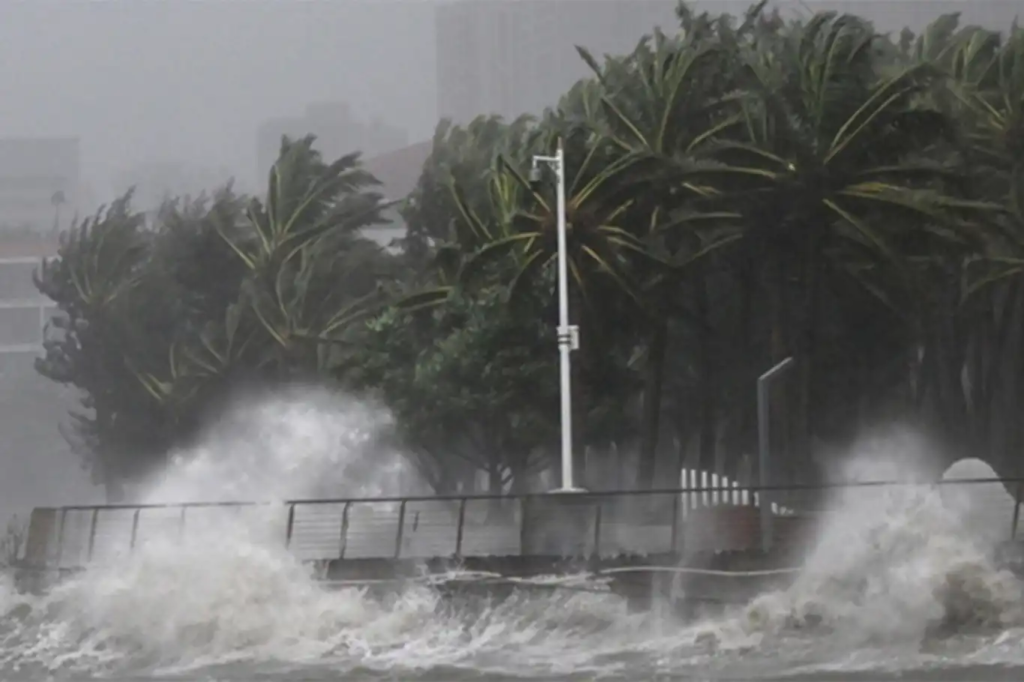Typhoon Matmo, locally known in the Philippines as Typhoon Paolo, has torn through parts of Southeast Asia, leaving at least 39 people dead and forcing the evacuation of hundreds of thousands across China, the Philippines, Vietnam, and Thailand. The powerful storm brought widespread destruction, flooding, and landslides across multiple countries, marking one of the most severe tropical systems to hit the region this year.
Philippines Hit Hard by Torrential Rains and Landslides
The storm first made landfall in the eastern Philippines, where torrential rains triggered floods and landslides that devastated several provinces, including Samar, Leyte, and Albay. Thousands of homes were damaged, major roads cut off, and power lines brought down by strong winds.
According to the Philippine disaster management agency, dozens were injured, and thousands of families sought refuge in temporary evacuation centers. Emergency teams are still working to clear blocked roads and restore electricity in heavily affected areas.
Southern China Orders Massive Evacuations
After crossing the South China Sea, Typhoon Matmo gained strength before making landfall again in southern China’s Guangdong and Hainan provinces. Authorities ordered the evacuation of over 300,000 residents from vulnerable coastal and low-lying areas as winds exceeding 150 km/h (93 mph) battered the region.
Ferry services and flights were suspended, while fishing vessels were recalled to port. Heavy rains inundated farmland and small towns, prompting rescue operations across affected zones. Chinese state media reported widespread power outages and damage to transportation networks.
Vietnam and Thailand Struggle with Floods
In Vietnam, the storm’s remnants caused flash floods and landslides in northern and central provinces, severely disrupting road transport and damaging rice fields and other crops. Meanwhile, Thailand’s northeastern provinces saw rivers swell and overflow, forcing local authorities to issue flood warnings and mobilize emergency response teams.
Weakened Storm Still a Major Threat
Meteorologists said Typhoon Matmo weakened into a tropical storm after moving inland, but warned that its wide rain bands continue to pose significant flooding and landslide risks across Southeast Asia. Experts noted that the storm’s intensity reflects a growing trend of stronger and more destructive tropical systems linked to climate change and rising ocean temperatures.
Recovery and Relief Efforts Underway
Regional disaster response teams have shifted their focus to search and recovery operations, clearing debris and restoring essential infrastructure such as electricity and communication networks. Humanitarian agencies are distributing food, clean water, and medical aid to displaced families, particularly in remote villages cut off by floods.
Preliminary estimates suggest that economic losses across the four affected countries could reach hundreds of millions of dollars, with long-term impacts expected on agriculture, housing, and livelihoods.
Forecasters Warn of More Storms Ahead
As Typhoon Matmo dissipates, meteorologists warn that the Pacific typhoon season remains active, with conditions favorable for new storm formation in the coming weeks. Governments across the region are urging communities to stay alert and reinforce disaster preparedness plans amid what is shaping up to be one of the most intense storm seasons in recent years.
For millions across Southeast Asia, the aftermath of Typhoon Matmo is a stark reminder of the growing climate threats facing coastal and island nations in the region.

